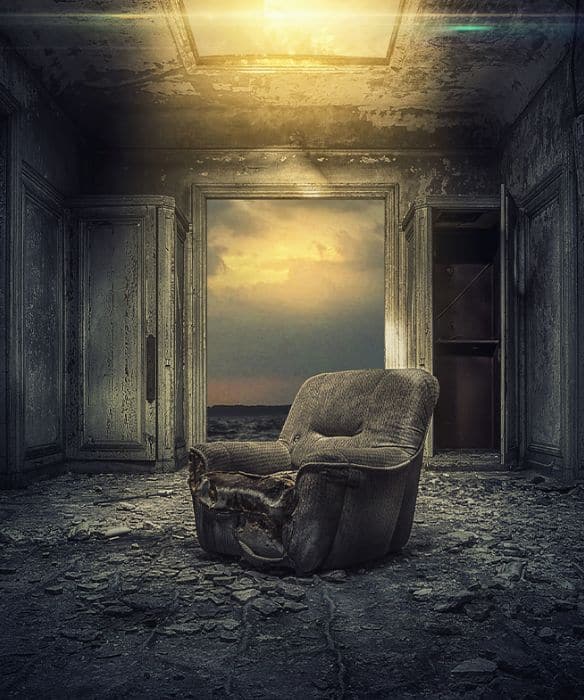Stay logged in to proceed with bookings, orders and offers.
On changing the terminal, you will loose items in your cart. Are you sure you want to change your terminal?
Built under the orders of Akbar the Great, Fatehpur Sikri served as the capital of the Mughal Empire for 15 years. The ruins of the city narrate a unique tale of Mughal, Persian, and Hindu architectural influences
Every year, millions throng to Agra to see the Taj Mahal, the mausoleum constructed by Emperor Shahjahan for his beloved queen Mumtaz Mahal. But few know that just 40 km. away lie the ruins of an entire royal city built in the name of a father's love – the ghost town of Fatehpur Sikri.
The city was built by Mughal Emperor Akbar in honour of Sheikh Salim Chisti, a Sufi saint. Legend has it that the ruler, desperate for a son to continue the Mughal lineage, sought out the blessings of the saint. Soon after, in 1569, Akbar’s first son was born in the village of Sikri. The grateful monarch named him Salim after the saint. Two years later, Akbar decided to build a capital city in the same spot, surrounding a shrine to Sheikh Salim. He named it Fatehpur – City of Victory.
Intrigued by the prospect of walking through an ancient Mughal city, I planned a day trip to Fatehpur Sikri. I booked a train ticket from New Delhi to Agra, and from Agra, I hopped on a bus that would take me to Fatehpur Sikri. The train journey was about two and a half hours long, while the bus ride took about an hour.
Once I got off the bus at Fatehpur Sikri, I was hounded by touts and unlicensed tour guides who wanted to show me around the famed town. Doing my best to dodge them, I headed towards the ticket booth. There I managed to get a ticket and hire an authorised tour guide.
The guide was straightforward, informing me that the tour would take an hour, after which I was free to explore the city on my own. It made sense, as the city is huge, enclosed by walls spanning nearly 11 km.
Read More
Read Less
Start the day early as there is a long distance to be covered. Bhujodi is at 324 km from Ahmedabad and is a small village just 8 KM from the town of Bhuj. It is one of the most prominent craft villages in the area. It is home to the Hiralaxmi Memorial Craft Park, a perfect place to sample craft flavours from the entire region.
This park has well-defined shops in a rustic setting, selling everything from Bandhni, and Ajrakh Prints to Leatherware, Copper bells and more. The emperor’s private chambers stand in a corner of the compound, with multiple floors housing a library, a resting area, and the emperor’s sleeping chamber. The guide informed me that the emperor’s bedroom had multiple corridors connected to the chambers of his queens. This offered a convenient way for the queens to maintain their privacy – and, my guide speculated, play hide-and-seek.
Another eye-catching structure in the emperor’s compound is the Anup Talao – a square artificial pond whose centre holds an elevated platform built on pillared stilts. Narrow bridges connect the platform to the pond's four sides. According to legend, Tansen, Akbar's court musician, entertained the emperor from here. The water in the pond enhanced the acoustics of the music, amplifying the sounds. The structure had a more practical purpose too – it was connected to several water tanks and wells Akbar built to counter the frequent water scarcity in the region.
The Panch Mahal, a five-story palace used by the royal household during the summer, is the tallest structure in the compound. The emperor would sit on the top floor to enjoy the cool breeze.
Walking across the compound, I spotted a series of narrow open drains laid out across the floor, connected to a pond and a water fountain. The guide said these drains were systematically placed to ensure a continuous supply of rose water to perfume the emperor’s quarters.
As I passed the emperor’s private chambers, I came across another intriguing structure. This used to be the legendary Birbal’s residence. Birbal was one of Akbar’s nine gems and served as a minister, advising the emperor on all matters. The architecture of the structure has influences from both Hindu and Mughal cultures.
The last stop on my guided tour was by far the largest and most intricate building in the city, which held Jodha Bai’s residence, her temple, and her kitchen complex. Jodha Bai was a Rajput princess and the mother of Salim (Jehangir), Akbar's first son. A vegetarian, Jodha Bai was given a separate kitchen for her culinary needs. One of her conditions, before she married Akbar, was that a temple be built for her in the palace. The emperor had agreed, and he had kept his word.
My guide and I walked towards the old Sikri village, entering the Jama Masjid compound. Also known as the Badshahi Masjid, this huge mosque has a red sandstone compound in which stands the white marble shrine dedicated to the Sufi saint Salim Chisti. At first glance, the contrasting materials and colours make the shrine gleam like a pearl on a bed of red rock.
The architecture of the shrine also has rich influences from Hindu and Mughal cultures. Inside, the saint’s tomb has a wooden canopy embellished with seashells. A strong aroma of rose water pervades the sanctum and occasionally, a group of singers chant paeans to the saint from outside the main entrance. Just behind the shrine are the graves of the women and other members of the royal household.
The Buland Darwaza, the tallest archway in India, is built on the eastern gate of Fatehpur Sikri, which serves as an entry point to the Badshahi mosque from the old Sikri village. This massive doorway, constructed to celebrate the conquest of Gujarat in 1573, is engraved with inscriptions from the Holy Quran.
The tour ended here, and I was free to explore the rest of the city. Looking around from the edge of the citadel, I glimpsed a strange-looking minaret next to an open compound some distance away. It was covered with protrusions that looked like stone tusks. Curiosity got the better of me, and I decided to explore. According to legend, Akbar had this minaret built in honour of his favourite elephant. Fondly named Hiran (gazelle), the tusker was swift on its feet and ran much faster than other elephants. That was how this structure got its name, Hiran Minar.
There is a huge open compound near this minaret that was used as an enclosure for the elephants. Akbar maintained a large collection of elephants, taking a personal interest in grooming them for his army.
Fatehpur Sikri was abandoned in 1585, not even two decades after its construction – possibly due to perennial water scarcity. Over the years, the city was targeted by robbers, slowly reducing to a shadow of its former glory. Today, Fatehpur Sikri is a ghost town, haunted by tourists hungry for the past. As the evening sun sank behind the abandoned city, I headed to the bus stand. My heart and mind filled with stories from five centuries ago, I boarded my bus back to Agra – and the present.





The Adani One expressly disclaims all liability, direct and indirect, in respect to actions taken or not taken based on any or all the contents of this Blog. The Blog is an opinion of the contributor based on the collation of data from various sources and is provided only for information purpose. Adani One does not canvass, advertise, solicit, invite or induct for any product, merchandise, information, brand or any other materials mentioned in the Blog, nor does it obtain any monetary benefit from the same. Reader is advised to read and apply his/her intellect and discretion in this regard. Any Intellectual Property mentioned in this blog belongs to the rightful owner. We do not intent to claim any interest over the same.